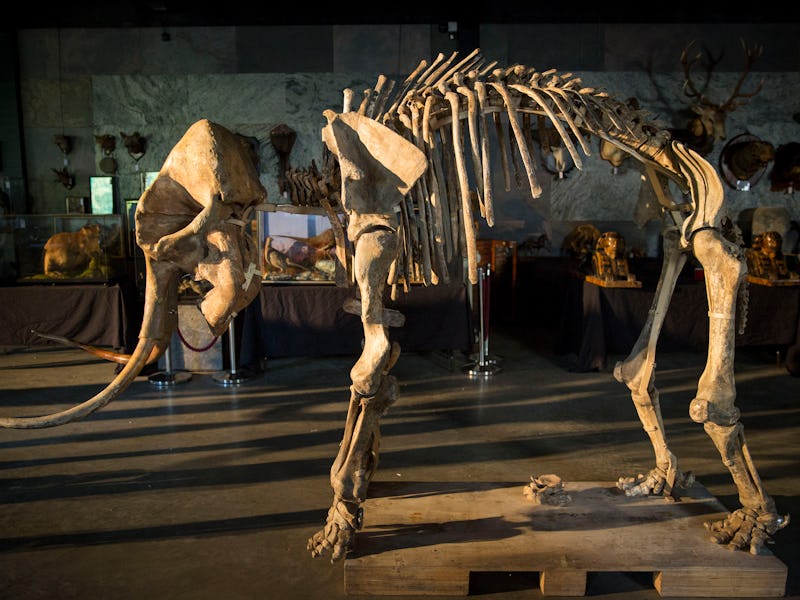A French Waterproofing Company Paid $646,000 for Ancient Mammoth Bones
"I think we have enough room."

A woolly mammoth skeleton sold at auction on Saturday for €548,000 — about $646,000 — to a French chief executive who plans to display it in his company’s lobby. The mammoth skeleton is considered an exceptional specimen because it contains about 80 percent of the animal’s original bones. The rest are resin replicas that fill out the skeleton.
The French auction house Aguttes estimated the high-quality skeleton’s value at between €400,000 and €500,000, but Pierre-Etienne Bindschedler, the CEO of French waterproofing company Soprema, ended up bidding a good deal more for the exceptional specimen.
“We are going to display it in the lobby of our firm,” said Bindschedler, according to Agence France Presse. “I think we have enough room.” His company’s logo is a wooly mammoth.
The 10,000-year-old skeleton was found by a hunter in Siberia.
This wooly mammoth was buried until ten years ago when a hunter found it poking out of the Siberian permafrost. Before it sold at auction on Saturday, it had been displayed in a French wine cellar.
According to AFP, the skeleton is one of the largest ever found, standing about 10 feet tall. Aguttes reports that it weighs just over 3,000 pounds.
“It shows some pathologies, such as necrosis in one of the feet and the lower mandible and the trace of an old fractured wound, which give us ample information on the vicissitudes of a long mammoth life,” according to the report published by Aguttes in advance of the auction. Experts suspect that the mandible problems could have led to the animal’s death, as this condition would have made grazing painful and difficult. While many young mammoths died from accidents or were killed by early humans, this one appeared to live out its life until it succumbed to illness.
More and more mammoth skeletons have begun to surface in recent years due to melting permafrost, David Gelsthorpe, curator of Earth Science collections at Manchester Museum, told the BBC.
“The permafrost in Siberia particularly is melting at a very rapid rate because of climate change,” he said. “So not only are we getting these incredible skeletons coming out, but also pretty much as they died as well. We’re getting things like fur, the skin, the muscles, the organs — and even the last meal.”
As global climate change accelerates the rate of permafrost loss in cold locales, we will surely see more and more wooly mammoth skeletons like this one appear on the market and in museums. And hey, maybe we’ll even see live mammoths again in our lifetimes.